Three Things: Walking in the Rain
[NB: check the byline, thanks. /~Rayne]
“I always like walking in the rain, so no one can see me crying.”
― Charlie Chaplin
Now is not a good time to be walking in the rain, even if it hides your tears (I’m talking to you, Kevin McCarthy).
~ 3 ~
There are numerous warnings and advisories about the extreme weather event underway in California. The central portion of the state is and will be hardest hit over the next 12-24 hours because of a “bomb cyclone” but the entire state will feel the effects in varying degrees.
In no small part it will be due to the accumulation of rain before this cyclone; the ground in many area is already waterlogged and unable to soak up more water. As you can see from this California Water Watch map based on Tuesday’s data, portions of central CA had already passed 200% of the year-to-date precipitation before the cyclone hit.
There’s rain forecast every day for the next week as well; it’s hard to imagine there not being some enormously dangerous effects arising from this much rain in a state which ordinarily doesn’t see this much rain in an entire season.
~ 2 ~
But it’s not just the rain which is problematic.
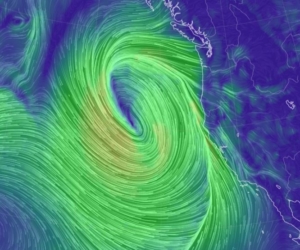
[Graphic: Surface wind, approx. 3:15 PM PST January 4, 2023 via earth.nullschool.net]
Power outages are ongoing, some beginning late morning Wednesday. The entire Mission district in the Bay area went dark in early evening local time; by 10:00 p.m. 100,000 residents had lost power in the region.
(Gee, I wonder how Silicon Valley and San Jose are handling this weather event.)
Portions of Santa Cruz upgraded from evacuation warning to evacuation ordered.
I listened to a podcast Wednesday evening on KQED featuring Daniel Swain, climate scientist, Institute of the Environment and Sustainability at UCLA; Brian Garcia, warning coordination meteorologist, National Weather Service SF Bay Area/Monterey; and Gerry Diaz, newsroom meteorologist, SF Chronicle. I was struck by how blasé and banal some of the inquiries to the station were, like how to deal with problematic trees, or whether a person living less than 14 feet above sea level on a canal might be at risk of flooding. It was already far too late to be asking these kinds of questions when much of the area was already without power, the coastline was surely being battered by gale and hurricane-force winds, and people should have evacuated 12 hours earlier.
So much denial.
~ 1 ~
The really sad part: just like the wildfires California has faced the last handful of years, this isn’t the last time there will be a weather event of this magnitude. There will be more, they will get bigger, they will happen more often. Denial won’t prevent them or make them go away, any more than denial has worked to fend off the COVID pandemic.
Yet denialists will point to other disasters elsewhere in the U.S. claiming California isn’t anything special, normalizing weather disasters.
This normalization, though, denies the increasing number of weather disasters, keeping pace with the mounting climate crisis:
Eight out of the 10 years with the highest number of natural disasters occurred in the last decade.
Since 1980, there have been 332 billion-dollar natural disasters in the US. In total, these disasters have cost $2.2 trillion after adjusting for inflation and took the lives of more than 15,000 people. This includes 160 severe storms, 57 tropical cyclones or hurricanes, 36 floods, 30 droughts, 20 wildfires, 20 winter storms, and nine freezes.[1]
In the 1980s, there were a total of 31 billion-dollar natural disaster events, resulting in 2,970 deaths. In the 2010s, this number rose to 128 such events, resulting in 5,227 deaths.
[Source: USAFacts.org, Is the number of major natural disasters increasing?, updated November 5, 2022]
Now denialists are currently obstructing the operation of U.S. government by holding out against the majority of their party’s caucus and refusing to elect their party’s choice for House Speaker. By denialist I mean the members of the House GOP caucus who denied the results of the 2020 election, who objected to certification of the election, who were Trump-y enough to be endorsed by the orange-skinned golf cheat. None of these people are serious about governance; none of them will do anything constructive as members of Congress with regard to climate change.
They are simply continuing the January 6 insurrection by other means.
It must be particularly galling to House Speaker candidate Kevin McCarthy (R, CA-20), being held hostage by a couple handfuls of people from wide-flung places across the U.S.:
[Source: https://www.nytimes.com/interactive/2023/01/04/us/politics/house-speaker-republicans-vote-against-mccarthy.html]
…while McCarthy’s district is currently floating away, and he’s unable to do anything about federal response as a member of Congress.
~ 0 ~
If you’re in California, please, please, PLEASE heed the National Weather Service’s warnings about conditions in your area.
Mastodon user Jenny from the Bloc (@[email protected]) pulled together a nice list of informational links for use by Californians and curious folks outside the Golden State:
https://aware.zonehaven.com/search – map of evacuation orders and statuses (not complete – only works where integrated with local services)
https://pgewam.lovelytics.info/pge_weather_app/ – pg&e-run weather map with information on winds, precipitation, and more
https://pgealerts.alerts.pge.com/outages/map/ – pg&e-run map of outages. lets you search by address
https://poweroutage.us/area/state/california – third party map of outages. does *not* let you search by address
https://calalerts.org/ – landing page for county-based emergency alerts. note that each county runs their own system, so if you want to keep track of multiple locations in different counties you will need a unique account for each county
https://sfplanninggis.org/floodmap/ – hypothetical flood risk map for city of sf (NOT real time)
https://tidesandcurrents.noaa.gov/map/# – noaa-run map of tides, water levels, meteorological observations, and more
https://marin.onerain.com/map/?view=www_marincounty – marin-based map of winds, precipitation, river levels, and more
https://www.oaklandca.gov/topics/winter-storms city of oakland’s dedicated winter storms webpage with further links to oakland-specific resources
https://www.windy.com/ – weather map with information on temperature, precipitation, air quality, and more
https://quickmap.dot.ca.gov/ caltrans-run map of road conditions
https://sonomacounty.maps.arcgis.com/apps/webappviewer/index.html?id=69a0e54e9e2b48c086d122027b21c961 – sonoma county evacuation map
https://slvpost.com/at-home-when-debris-flow-strikes-there-is-hope/ – article about recognizing and responding to debris flows (land slides, mud slides, etc)https://www.wunderground.com/ – weather site that is extra useful for under-served areas
https://alert.valleywater.org/map?p=map – surface water data & map for the south bay
https://www.cityofpaloalto.org/Departments/Public-Works/Engineering-Services/Creek-Monitor-Cam creek monitor and camera for palo alto
https://www.nytimes.com/interactive/2022/08/12/climate/california-rain-storm.html – not about this storm in specific, but an interactive article predicting exactly this kind of storm, explaining how we got here, and exploring what we can do to respond to storms of this type.
For the rest of our community members, do spend some time this week checking your emergency/disaster preparedness plan.

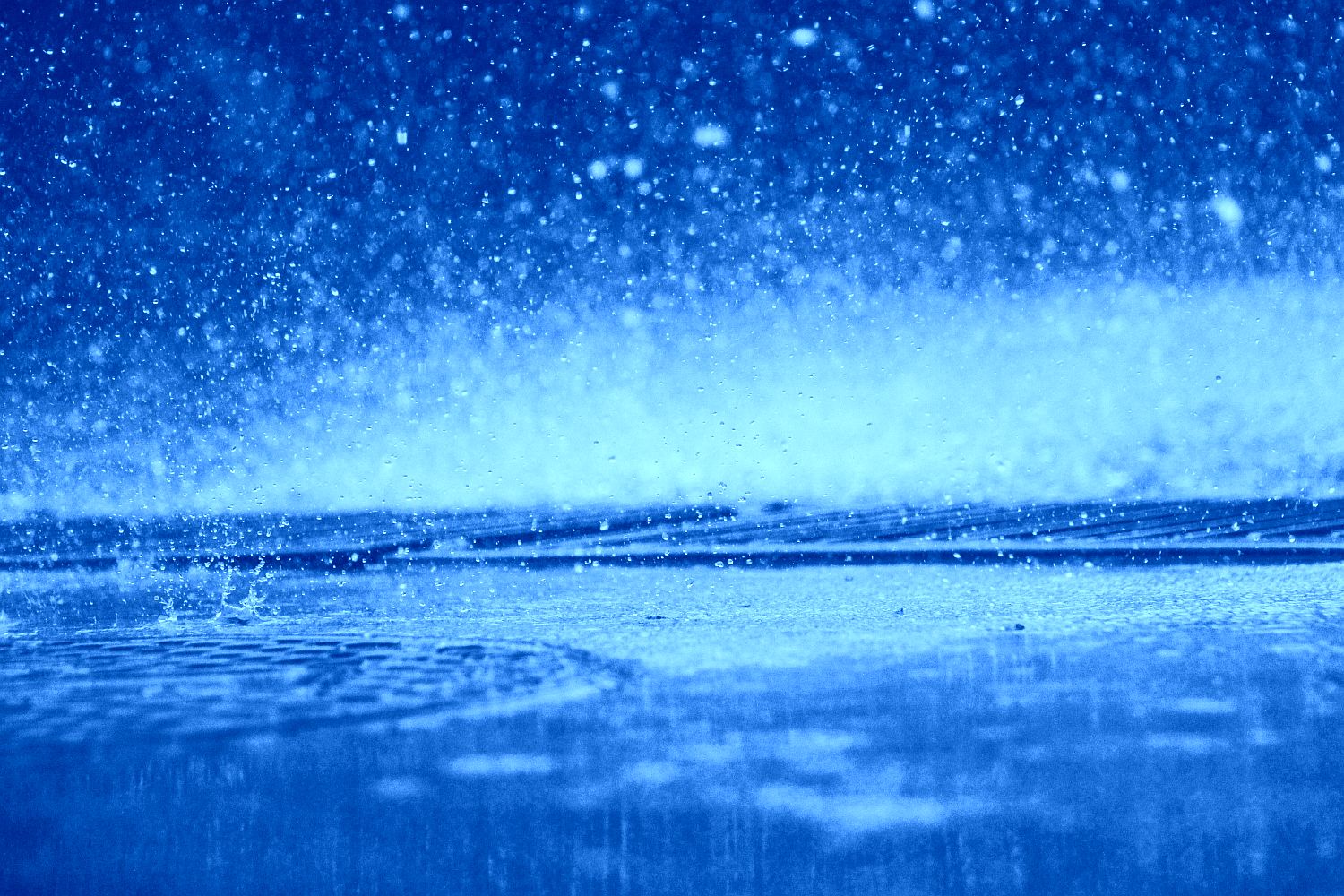
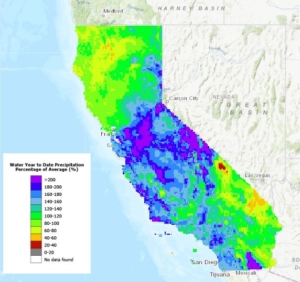
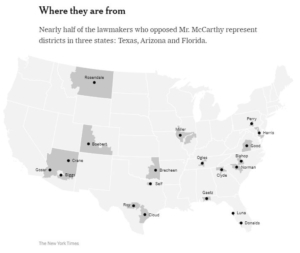
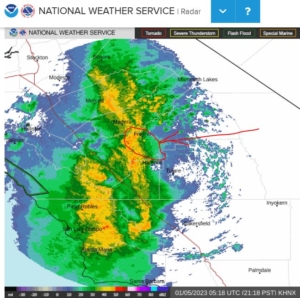


If you’re not from California, did you know that CA produces a third to half of the U.S.-grown fruits, nuts and vegetables?
I went to the grocery yesterday and stocked up on greens because we’re not likely to see many locally grown here in the Midwest for some time. I’ll be working on planting some hydroponic greens this weekend but they won’t be ready for harvest for at least 2-4 weeks, and I think we’ll see widespread shortages of greens for 8-10 weeks.
Much of that comes from the Imperial and Coachella Valleys in the southeast corner of the state (Palm Springs is there on the northern side). As far as I know, it’s mostly desert and so far hasn’t been hit like farther north.
When California has had unusual amounts of rain in the past, it shows up in our grocery stores both in terms of poor quality greens and their availability. This sustained weather system *will* affect even the Imperial and Coachella Valleys, and it will affect their market if greens (and other produce) grown outside the valleys are diminished.
That podcast to which I linked had an interesting discussion about the definition of drought. It’ll be important as areas which are still considered in drought like the Imperial and Coachella Valleys receive more rain and more water enters neighboring watersheds.
If you want something quicker try microgreens – just large sprouts actually- grown in a greenhouse flat with soil or on artificial pads (I use seed starting soil). Ready to harvest (with scissors) in about 5 days. You can order from many large seed houses, Just be careful you don’t use treated seeds and in my climate in N Florida I need to defend from squirrels who especially love sunflower greens and will stand in them while eating.
Thanks. I actually started growing microgreens back in 2020 when I was worried about supply chain disruptions during the lockdown. I do mine in recycled/repurposed takeout food clamshell containers with clear lids on beds of palm coir, sprinkled with a little cinnamon as an antifungal agent. Takes longer, more like 10 days to two weeks for most varieties of greens to reach optimum harvest in my setup with LED grow lights.
I’m using the same LED lights and rack for starting lettuces and watercress using the Kratky hydroponic method in canning jars, but it will be 4-6 weeks for harvest. The stems from romaine lettuce I bought this week may give me a harvest sooner; I’ve planted them in a coir+growing medium mixture, hope they sprout a second time soon.
Not too keen on either sunflower seed or pea shoots; didn’t realize the latter were really cowpeas which have a nutty flavor. But I ate them anyhow. Prefer a mix of broccoli, kale, kohlrabi, cabbage, and arugula by Mountain Valley. A friend gave me some excess dill seed thinking I’d use them in baking or pickles, but they were fabulous as microgreens, to die-for on broiled fish or on boiled potatoes with butter and garlic.
Rayne, here in Silicon Valley, shopping produce departments of the grocery stores is a game of roulette.
There are unpredictable holes where there should be broccoli and all sorts of other produce, because the Salinas Valley, where a huge number of things are grown, is being slammed.
Parts of Watsonville and Salinas were evacuated yesterday because of the predicted flooding. We are anticipating waves of atmospheric rivers thru next week. This means that even when there is a break, such as the one expected tomorrow, it won’t be for long enough for the fields to dry enough for them to be picked.
The egg shortages have begun due to the slaughter of laying chickens with avian flu, and you should anticipate beef shortages in the spring and summer due to the droughts in the mid-west which prompted ranchers to take their cattle to auction early because of feed shortages.
Time for that really strict diet I think.
FYI from Mother Jones regarding California’s place in the food production category:
“The state produces nearly all of the almonds, walnuts, and pistachios consumed domestically; 90 percent or more of the broccoli, carrots, garlic, celery, grapes, tangerines, plums, and artichokes; at least 75 percent of the cauliflower, apricots, lemons, strawberries, and raspberries; and more than 40 percent of the lettuce, cabbage, oranges, peaches, and peppers.
And as if that weren’t enough, California is also a national hub for milk production. Vast dairy operations confine cows together by the thousands and produce more than a fifth of the nation’s milk supply, more than any other state. It all amounts to a food-production juggernaut: California generates $46 billion worth of food per year, nearly double the haul of its closest competitor among US states, the corn-and-soybean behemoth Iowa.”
Arizona can’t do that anymore because California sucks our water.
I’m a NORTHERN Californian. You are referring to SoCal. They take and they take and then they hose off their driveways on a daily basis.
We in SoCal are certainly wasteful of domestic water, no doubt, what with all the green lawns, though many locales have made inroads with replacement programs, substituting xeriscape and drought tolerant native species for the green carpets. In any case, though, big ag, from the Central Valley to Coachella and Imperial Valleys, still uses 70% of the water and industrial/commercial usage accounts for another 20% or so. I won’t say it’s a drop in the bucket (sorry for the bad pun), but wasteful irrigation practices really do account for. the lion’s share of the usage.
What water is that? The Colorado? Or the water given to the Saudis for their alfalfa?
Yes.
I couldn’t find carrots when I went shopping earlier this week, which seems utterly ridiculous, but not a single baby carrot, not a cooking carrot. I wonder if the groundwater situation had already changed enough before this storm in a way which affected carrots.
Not as worried about milk because my state has a fairly good supply ranking 6th nationally in milk production.
Good thing I loaded up on lemons, too. Scrubbed with white vinegar, packed in vacuum sealed bags and refrigerated.
Buy more organic eggs — the organic farmers weren’t hit as hard by the avian flu and the price has become competitive with regular eggs. I stocked up on dry egg whites some time ago as a hedge against supply chain problems.
Been eating more seafood, especially mussels and squid since both are quite cheap and quick to fix. Sous vide squid is a marvel.
And tofu, so much more tofu. I bought starter and soybeans to make my own tempeh. I think my spouse is going to be rather annoyed at the vegan meals we’re going to be eating, though he didn’t complain yesterday when he snarfed down my 老干妈热米线 (lao gan ma hot rice noodles) with grilled tofu.
YUM ! We’ll be there about 6:30 Friday evening ?
LOL See you — if you can’t make it on time, try this recipe https://thewoksoflife.com/lao-gan-ma-noodles/ and add your choice of protein. Grilled tofu, fried tempeh, strips of fried scrambled egg, chicken, it’s all good. I like kale or spinach or mustard greens in mine for greens.
God Mother indeed ! Thanks
‘Round these parts we call it “old lady sauce” because this old lady uses this sauce liberally. I’ve even put it on popcorn. LOL
Thank you for this post. We have family in Berkeley, SLO, and San Diego as well as dear friends in Oakland and south of San Fran.
Needed this info. Means a great deal to have it.
Love that list of links!
(Watching this rain mess unfold, I saw video of a kayaker going down a street about 10 blocks from where I used to live in the East Bay. That certainly got my attention!)
Family members live in San Diego just east of Balboa Park. They reported double the yearly rainfall already this year. While the coastal and wash areas are somewhat threatened and the surf warnings are significant, it really is middle and northern California that are bearing the brunt. One site reporting aggregate power outages shows 180,000 customers in California out of electric power as of 7 AM ET. From Bakersfield north to the state of Washington from the Pacific Ocean to Nevada between 10% and 20% of the customers are out of electric power service. San Diego forecast is for 35 mph winds and 1″ of rain Thursday. While that is a lot for SD, it is nothing compared to up north. Help others less fortunate. And be prepared.
There’s a cascade effect from events like this; if all of PG&E’s crews are dispatched to work in coastal central CA, what happens in other areas which aren’t as deeply affected?
What happens to the rest of the state’s grid? I know it’s not Texas, thank the stars, but the effects won’t be entirely localized.
There is a lot to play with at this site:
https://earth.nullschool.net/
Zoom in/out; rotate; lower left Earth click offers other overlay toys.
It’s fun, isn’t it? I love using it. Should have seen the surface wind map during the recent blizzard, was fascinating to see which areas were unaffected because the system rotated.
Built by a young person from Cedar Rapids who had moved to Japan and was there twiddling his thumbs wondering what to do, what to do.
He said he wrote/built most of it in his pajamas.
The part which could have been tricky coding the site for a seamless experience around the globe is access to the right data sources. I’m glad he could pull them together.
Windy is a similar app: https://www.windy.com
I had to go out yesterday, but fortunately it wasn’t raining (much) then. We got half an inch overnight, though, bringing up to a little over an inch in the last day. L.A. isn’t getting hit anything like the swath from Big Sur to north of Tahoe! (We’ve gotten these for as long as I can remember. It shows the importance of maintaining storm drains and streams, and not using impervious pavement everywhere.)
Really need more than just maintaining storm drains and streams, and it’s not just in CA that a reset of stormwater management is needed.
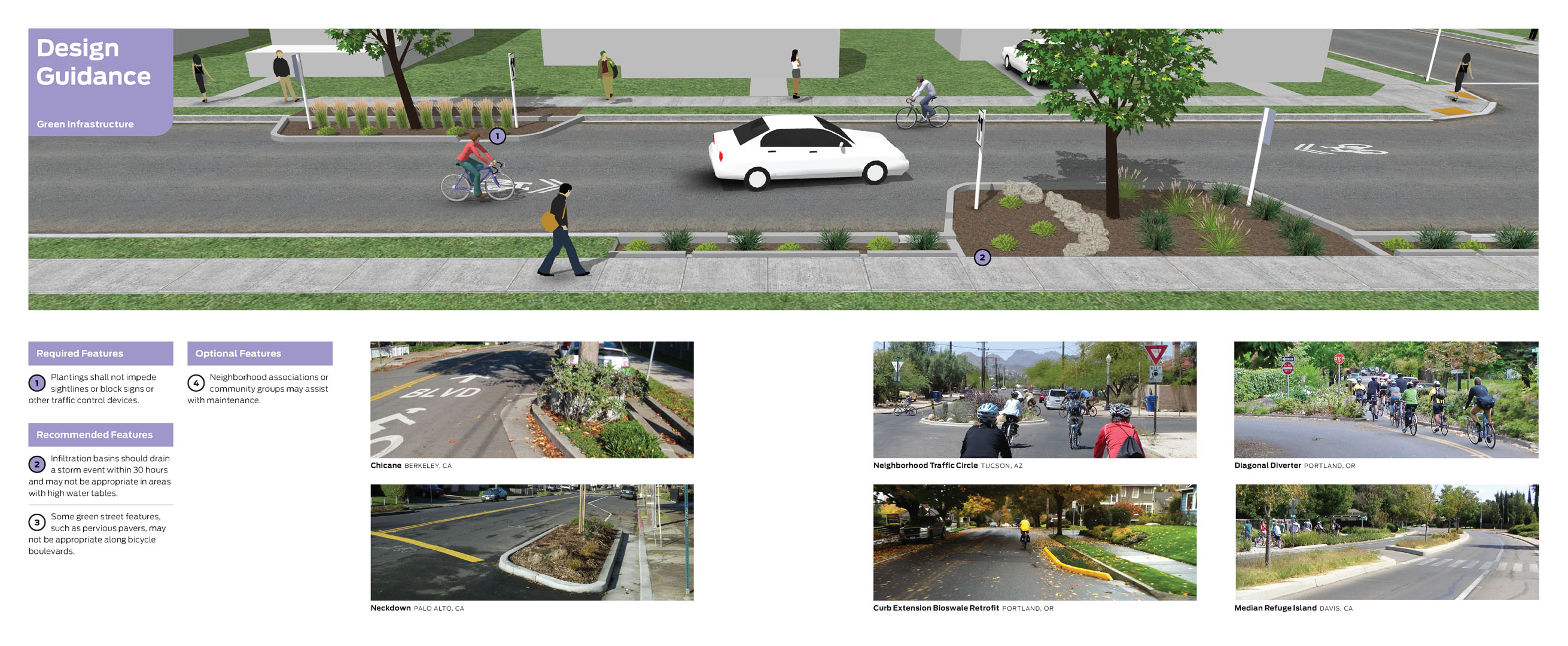
Thinking of Detroit’s 500-year flood event a couple years ago as an example where green infrastructure could have minimized some of the flooding. There have been quite a few other urban flooding events since then which also pointed to the need for investment in non-traditional stormwater mitigation.
As for LA: the data does the talking. http://www.laalmanac.com/weather/we08aa.php
In 1913, the big flood in the Mississippi River valley systems, the Ohio River, and in Dayton OH the Mad River and Miami River all flooded. “Remember the promises made in the attic.” was the charging statement to plan and implement flood control in and around the Dayton and Miami Valley areas.
The Miami Conservancy District was formed in 1915. Funding is a millage rate on real estate in all of the affected local areas. A series of five normally dry flood control dams and shaping of rivers and streams and 43 miles of levees were built. More levees were added later. These are designed to the 400-year flood events. The community embraces the MCD and those parks.
Today, the MCD operates public parks above and below these normally dry dams. We utilize the vast array of parks and connected bike paths almost every day. The bike paths are connected to the system of bike paths that cross one-half of the state of Ohio. From Dayton to Xenia to Cincinnati to Columbus and networks between.
The first Chief Engineer of the MCD was later named the first Chief Engineer of the Tennessee Valley Authority.
finally, a thread i am currently living! LOL. i co-own commercial property on the mid-peninsula in the Bay Area. we learned the very hard way that the outdoor eating parklet located next door was built flush to the curb blocking the natural flow of water down the curb into the drain.
during the New Years Eve day deluge – exacerbated by the high King Tides – the onslaught of water hit the parklet which acted as a damn sending the wall of water careening onto the sidewalk at an angle straight under the closed doors of our store. the floors are completely ruined and the store closed indefinitely. gonna be a fun time with insurance companies battling this one out.
with the ground saturated, the current storm is bringing down trees and electrical wires non-stop. power is out all over. tree down currently blocking CalTrains. road closures due to flooding everywhere. all requested to stay home if possible.
we have sandbags in place for this round – fingers crossed. California is now down to two seasons: Drought or Deluge.
Good luck with that situation, Rosalind. I’m really sorry about your business being flooded. Not much relief in sight over the next week. Our uphill neighbor’s sidewalk funneled water into our house when there were heavy rains. We had to sort that out over the years.
Thanks for sharing your situation, rosalind. Yikes. Fighting with an insurer about water damage will be tricky. I’m trying to remember what the phrase was the reinsurer I once worked for explained as the trigger for payout — something about a rapid event versus a slow, long-time failure. May also depend on whether the property is in a defined flood zone. Hope the state comes up with some funding if insurer(s) don’t pony up cash.
the question is WHOSE insurance company. the owners, the tenants, the owner of the parklet, the city for not requiring parklets on this street be built raised up with gutter clearance? gonna be a Tarantino stand-off.
and a huge shout out to the completely over-worked Fire Departments, Public Works and PG&E crews who have been responding to non-stop calls. the rain is setting off fire alarms which the FD have to respond to and re-set in addition to life threatening situations. our poor local FD returned to their station on Sunday to find IT flooded.
Oh, and a huge chunk of the Aptos Pier just washed away.
The Capitola pier is in trouble also. 30-foot waves are rough on the coast.
The Aptos pier? Yikes! Is the wreck of the cement ship still there?
alas, reports & photos show the S.S. Palo Alto has broken away fm the pier and is now in pieces getting battered by waves.
The S.S. Palo Alto?
Does it have a marching band?
Pics of what’s left:
https://www.sfgate.com/bayarea/article/santa-cruz-cement-ship-breaks-17697089.php
Waves were 25 to 35 feet – part of the pier itself is gone. (The ship was already broken from a storm some years back.)
Also, as per usual during any significant storms, Hwy. 1 is closed due to multiple rockslides and washouts. From 10 miles south of Ragged Point on the south to Pt. Lobos on the north – that’s a large closure.
I’m not there, got this info from the Big Sur Kate blog:
https://bigsurkate.blog
Rosalind, One last thought on your flooding problem. Given the property values in the area, I urge you to hire a structural engineer to evaluate your particular problem. That’s the only way to figure out the cause and how to properly fix it. We had to hire an engineer, then a land use attorney, litigation ensued, etc. We never wanted to do that but it happened. Finding a global structural resolution for everyone would be ideal. Good luck. I’m sorry. It’s pouring again here now.
A civil engineer, not a structural as the latter specializes in structures but not necessarily in infrastructure.
Believe me, I’ve worked in civil engineering practices, been married to a structural engineer. The structures guy may figure out the problem but it won’t happen as quickly as it would if a civil engineer who regularly designs streets, drains, other infrastructure was consulted.
…and good luck dealing with SFDPW (Dept. of Public Works), led by a crook until not that long ago.
Woooow…that’s good reason to ensure one hires a civil engineering consulting firm which has done work in urban environments outside the area, not in SF. Need to assure the firm has no lingering reason to protect the municipality/ies involved in infrastructure.
Thanks Rayne. This topic is a sore spot for me. I want to avoid going down a rabbit hole that’s entirely irrelevant to this blog. Perhaps we should have hired a civil engineer long ago… In any event, my thanks to you too, for your work here, and for this comment. I appreciate it and you.
I wish I could say I appreciate my stints working for a couple civil engineering firms (I did meet my spouse through one), but ugh, it is some of the most tedious work particularly when dealing with municipal road and sewer projects. The specifications are goddamned mind numbing, whether federal, state, or local projects.
Thanks for this post, Rayne, and the links above. I live on a chert filled hill in the southern part of San Francisco, above the Mission District, which you mentioned. There are parts of the Mission District that flood whenever there are substantial rains. There are parts of the newly developed Mission Bay neighborhood and the Marina that flooded because they are built on landfill. In the Marina district, this is the same area where you may have watched buildings collapse and burn during the 1989 earthquake. Rain storms were consistent for many years here, and that is how we got our snow and water. Rural and urban development without environmental consideration and the failure to build corresponding critical infrastructure have exacerbated the effects of the storms that inundate so many today. Our utility, PG&E bears much blame. So does the current mayor of San Francisco, who blamed the NWS for failing to “warn” her about the severity of the impending storm. Ha. Any heavy rain storm causes typical problems in this city. Just another example of the mayor trying not to place responsibility on her wealthy tech and developer pals. I’m conflicted about the weather situation. I’m glad to see snow and rain. It will help the drought. I’m not happy to see the effects that lack of long term planning and environmental vision have across the state.
Thanks for sharing, hope you’re able to stay dry.
I can’t help thinking of all the homeless — especially the working poor, those who work in the region but aren’t paid enough to obtain housing. How very frustrating it must be to be required to show up on the job but have insufficient safe and dry housing after hours.
Rayne, I agree completely.
Our little office building in north Oakland has a sheltered entry open to the sidewalk. Upon arriving at work today there was a fellow huddled in the corner whom I had to pass by to enter the premises. I told he could stay awhile until the rain died down, but he has since moved on.
{Rayne – my recent comment below must have had a problematic link, sorry!)
Punaise, Thank you for your kindness and humanity in inhumane times for the unhoused in the Bay Area. I did not realize we were area neighbors. Thanks for your insightful, literate and sometimes hilarious posts.
Howdy, neighbor! (Former Bernal Heights, and before that, Cole Valley inhabitant here, East Bay since 1990). It was the smallest of gestures and cost me nothing. We despair at the despair that surrounds us daily.
Punaise, I live in Bernal. We must have been neighbors for a time. I don’t want to derail this thread any more than I have already. Nice to meet you and thank you so much for your contributions here.
punaise, totally OT, did you see that Stephane Wrembel is playing at Freight and Salvage as part of the Django Reinhardt’s Birthday Celebration Jan 20-22 ?
Thanks, Former AFPD!
Didn’t have that one on my radar screen, Molly, but I will look into it.
Did the mayor expect a personal message from NWS? Because they’ve been saying for a week it was going to be bad this week. (I don’t think she’s good at the job, from what I’ve read so far.)
PJ, Don’t get me started on Mayor Breed. Not a fan. That’s an understatement. My screed would run far afield of this thread.
I bookmarked this years ago and reread it every so often. It’s a chilling long-range look at the water-related environmental problems California and the West face.
The Great Thirst / Looking ahead to a post-global warming life in California, 60 years hence
I suspect we’re already at unstoppable runaway feedback. But I don’t know that. I don’t know that anyone knows.
I agree with Bobster33 below, re: warming, not change.
Had not heard of until a couple months back of Atwood’s “Oryx and Crake” novel. (Nearly twenty years old now.)
I read it.
Set a few years hence, Crake understands the problem, understands gene manipulation. And so engineers an enhancement to survive the warming as well as an enhancement to be immune to the otherwise lethal virus he has also engineered and loosed. A wipe of our species. Leaving a smaller population of rather weird “kind of” people.
All to give the planet a chance. Atwood maintains to this day, sure, someone might try that some day.
Oryx and Crake. One of the best dystopian novels – altho many would say they are more possibilities than dystopia.
Of course Stephenson’s “Snow Crash” envisaged a future that I think we are also experiencing in many ways.
We need to stop calling this climate change and call it global warming. Climate change is a Frank Luntz developed phrase to disempower the global warming movement. I remember watching a video of Frank talking (at the Continental Club in SF?) about the phrase global warming. Frank said that some oil people asked him to find a way to defeat Al Gore’s global warming movement. Frank got focus groups together and discovered that the phrase global warming was similar to the word cancer in that people attributed a sense of urgency and importance to global warming. Almost two thirds of Americans thought global warming was both urgency and important.
Frank told his patrons that he would have a tough time reframing Americans’ perception. With even more money, Frank went back to the drawing board and came up with a phrase that cuts the urgency and importance of global warming in half. That phrase is climate change. Frank said that in all of his experience, he had never found a phrase that was more effective at changing public perception. Shortly after Frank’s revelation, virtually every Republican and newscaster started calling it climate change.
I remember watching Frank talk about this and thinking, never have I ever wanted to reach into the TV and punch out a person more. I think Frank even said that in 2006 using the phrase climate change instead of global warming would set back the climate movement by 20 years.
In 2016 I attended a speech by George Lakoff at the Continental Club in SF. He specifically reminded me of that Frank Luntz clip and George urged everyone in the audience to stop calling global warming climate change. Call it global warming.
We’ll have to agree to disagree. While I don’t agree with Luntz — and I’d much rather call it a long climate emergency — “global warming” will not work on folks who’ll point to the blizzards we’ve had from repeated polar vortex-driven events over the last handful of years due to the disrupted jet stream.
You want another better label? How about ELE — Extinction Level Event.
Not to pick nits, but shouldn’t that be Anthropogenic Extinction Level Event?
No doubt extinctions of many earth lifeforms have escalated because of humans, but is this the ongoing Holocene extinction, or a new seventh extinction event?
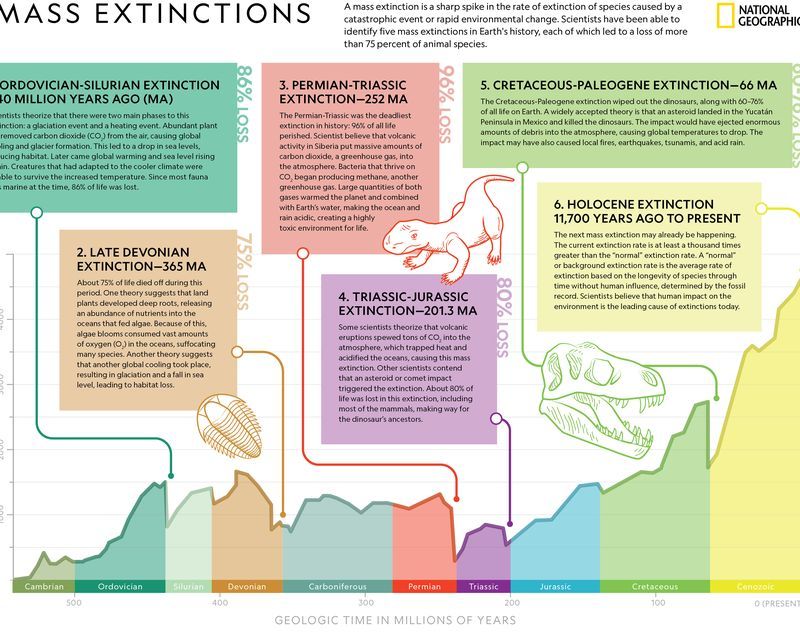
Humans may not be around to make that distinction.
Thanks for the background on the Luntz framing to Bobster and thanks to Rayne for the important thread. Sorry that I’m a little late getting here. I’ve been working on environmental issues for 30+ years and I have watched first hand the way the right attacks the environmental movement. Calling what is happening to the planet, ‘climate change’ did seem to both attract more green supporters, as well as giving the impression that increases in mean global surface temperatures would only mean seasons might change a tad and it might be a little chillier some places than others. No urgency. This has been unfortunate, in that it does not go far enough to trigger the “fight or flight” reaction that is fundamental to human survival. As a footnote to this discussion, I live in the Upper Midwest and my back is sore from shoveling more than 17 inches of snow from the recent atmospheric river that doused the West Coast. “Climate change” has GIGANTIC tag-on consequences.
I am worried that people will think the drought is over and return to overusing water. They may not realize that so much ground water has been pumped that we are still in a deficit. It takes a long time to replenish the aquifers if it is at all possible. Also, in California we don’t just get water from the rain and Sierra snow pack we get it from the Colorado River, so I am hoping these storms dump a good amount of rain in the Colorado watershed.
So far I am lucky, no worries about floods, wind damage or trees toppling.
“It takes a long time to replenish the aquifers if it is at all possible.” Unfortunately, many aquifers which contain paleowater will not fully recharge, especially in the American West. Groundwater pumping which lowers the water table causes the dewatered part of the aquifer to consolidate which reduces the available pore spaces for water storage. An example is the Central Valley of California which has subsided up to about 30 feet from groundwater extraction.
Emergency electricity is technically and economically trivial:
“Solar Battery Charger AA AAA C and D
$4.95
Our solar battery charger is a simple way to keep your Ni-MH or Ni-CAD batteries charged. Compatible with all sizes (AAA,AA,C and D). Simply insert the batteries and put the solar charger into the sunlight.
https://www.siliconsolar.com/product/solar-battery-charger-aa-aaa-c-and-d/ “
Batteries not included (but I’m adding them to these Christmas gifts I gave this year).
At these (retail) prices, $5 or 6 billion buys entry level electricity for the poorest billion people in the world – solar energy for light, communications, and battery charging.
Combining even this miniscule amount of solar with bicycles as both small generators and batteries, from AAs on down and on up through 6 volts, 12 volts all the way to the grid, an individual could conceivably have access to bare minimum electricity almost all the time in almost any situation. Looked at from this direction, bicycles, e-bikes, and the varieties of other new personal mobility devices as well as electric vehicles could be seen as a floating network of power producers and consumers* at the same time, mobile energy storage and generation.
This is one reason why I say Solar IS Civil Defense.
We would do well to prepare for the next weather event in ways that mitigate as well as adapt to the already occurring climate changes. We may need it quicker than we think.
* This energy consumer/producer concept is also happening in our buildings as net zero energy building codes are adopted.
Years of links to net zero energy examples and developments at https://zeronetenrg.blogspot.com (also available as a free quarterly links list)
“We remain alert so as not to get run down, but it turns out you only have to hop a few feet to one side and the whole huge machinery rolls by, not seeing you at all.”
Lew Welch
Keep in mind that all this rain will not only bring flooding. It will also produce bumper crops of grasses and underbrush. Given the right conditions in late summer and early fall that have become all to common in the state, this could be a setup for a record fire season, yet again.
Sierra Foothills resident between Sacramento and Lake Tahoe. At 2000+ foot of elevation. To give you some perspective on the amount of rain we’ve received in the last four weeks…..We drained out backyard Pool in late November to prepare for some Pool repairs in January. As of today, our 7.5 foot, deep Pool, is half full of rain water. I have Winemaking / Grape Growing friends south of Sacramento near Lodi. The whole area is just about completely under water. Levee’s being breached on the Consumnes River. Santa Cruz/ Capitola area is getting hammered. Reservoirs are filling up. The two big ones are Shasta, and Oroville.
This weather pattern is supposed to continue for another 8 – 10 days. It will get worse before it gets better.
The State needs an acquifier replenishment program, even if it means pumping excess runoff water, deep underground.
Our house is plenty safe. On top of a big hill, with a raging seasonal creek at the base of our Property.
Holy hell. I was afraid of that, hoped for better news for the wine industry but it’d take a miracle.
Thanks for sharing. Stay safe.
Vines are like Weeds. All this flooding is temporary, and largely will not impact the Vines ability to thrive in the future. Probably some extra spraying for the Vineyard managers before bud break next Spring.
Except for the soil moisture which might make it more difficult to get spraying equipment out in the yards, or the increased possibility of funguses, root rot, so on which might take advantage of the increased moisture and inability to spray, or the fact the vines may produce too much canopy (hello, water shoots) too early and require more pruning.
There’s at least another week of rain on tap.
a map new to me that may be helpful to others:
U.S. Drought Monitor: https://droughtmonitor.unl.edu/CurrentMap.aspx
That drought map exemplifies the challenge with current drought definitions. The discussion specifically mentions reservoir levels which remain low even while portions of the west receive record amounts of precipitation.
I need to go back and re-listen to that KQED podcast to which I linked because of the drought definitions they discussed.
I heard from my sis-in-law. They had power out for three days (!). They live in Davis, which is *not* a wide spot – it’s on I80 west of Sacramento.
Biggest employer in Davis is UC-Davis. Power outage isn’t exactly beneficial to education productivity.
It was somewhere around New Year’s, as far as I can tell, so school would have been on break.
Still have students and educators who need access to systems even between terms. Not good for +25K employees.
https://en.m.wikipedia.org/wiki/Great_Flood_of_1862
This seems pertinent to the present discussion.
Yeah, very pertinent, very similar description of storm effects though not exactly the same weather pattern. But close enough.
They were literally discussing the risk of an 1862-like ARkStorm this past August because of a paper Daniel Swain co-wrote, and boom, here it is.